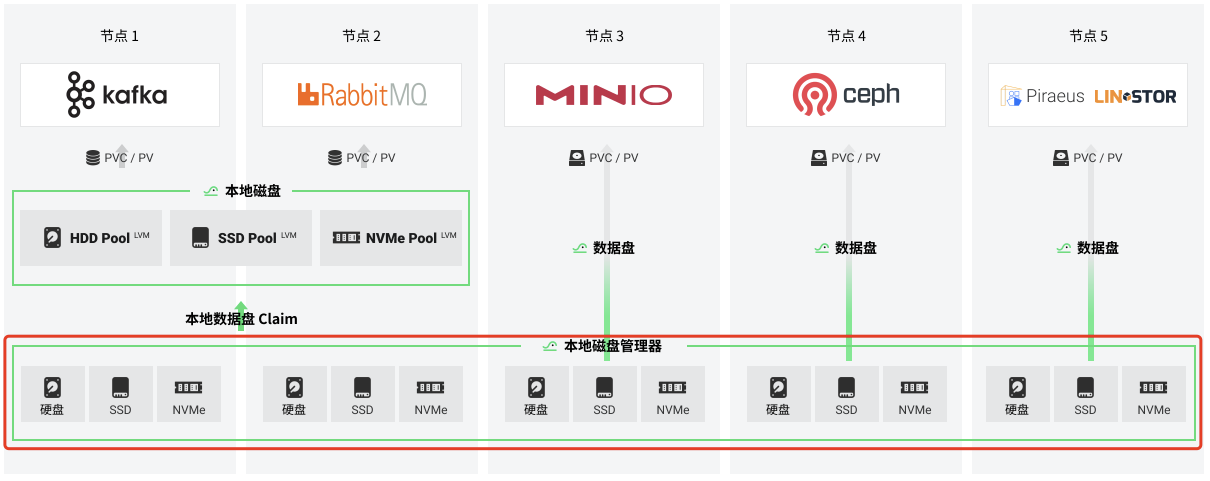local disk manager¶
Local Disk Manager (LDM) is an important functional module of HwameiStor system. LDM is designed to simplify managing disks on nodes. It abstracts the disk into a resource that can be managed and monitored. It itself is a DaemonSet object, and each node in the cluster will run the service, through which the existing disks are detected and converted into corresponding LocalDisk resources.

Currently LDM is still in alpha stage.
Basic concept¶
LocalDisk(LD): This is the disk resource abstracted by LDM. An LD represents a physical disk on the node.
LocalDiskClaim (LDC): This is the way the system uses the disk, by creating an LDC object to request a disk from the system. Users can add some description to the disk to select the disk.
Currently, LDC supports the following description options for disks:
- NodeName
- Capacity
- DiskType(e.g. HDD/SSD)
Usage¶
If you want to fully deploy HwameiStor, please refer to Using Helm Chart to install and deploy.
If you only want to deploy LDM separately, you can refer to the following steps to install it.
Install local disk manager¶
-
Clone repo to local machine
-
Enter the directory corresponding to repo
-
Install CRDs and run LocalDiskManager
Install the CRD for LocalDisk and LocalDiskClaim
Install the authorized CR and LDM Operators
-
View LocalDisk information
This command is used to obtain the disk resource information in the cluster. The obtained information has a total of four columns, and the meanings are as follows:
- NAME: represents the name of the disk in the cluster.
- NODEMATCH: Indicates the node name where the disk resides.
- CLAIM: Indicates which
Claimthis disk is referenced by. - PHASE: Indicates the current state of the disk.
View more information about a disk with
kuebctl get localdisk <name> -o yaml. -
Apply for an available disk
Create LocalDiskClaim
This command is used to create a disk usage request. In this yaml file, you can add a description of the requested disk in the description field, such as disk type, disk capacity, and so on.
View LocalDiskClaim information
View the Status field information of
Claim. If there is a disk available, you will see a value ofBoundfor this field.